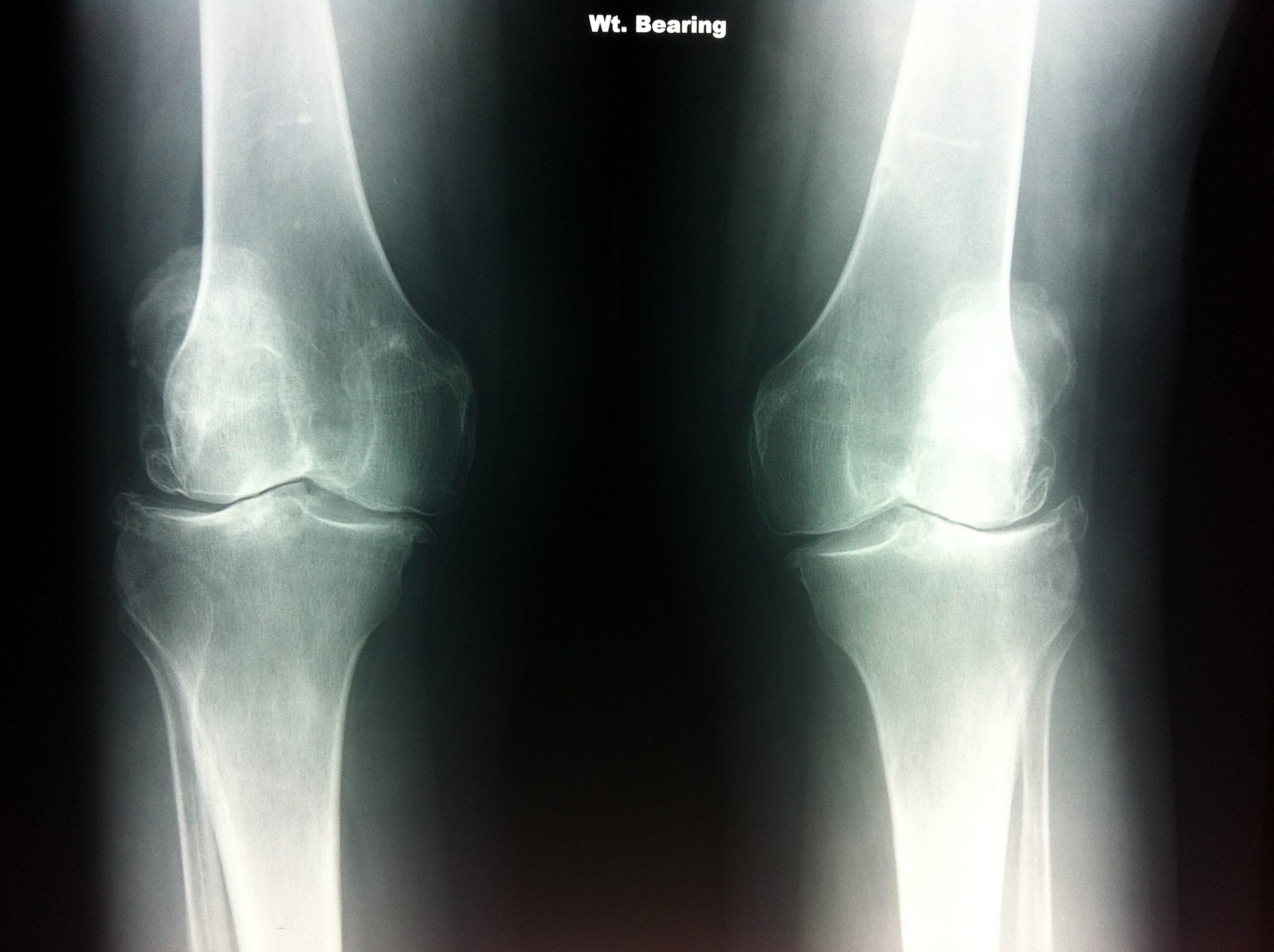The foot and leg is a common location to develop arthritis, the most common form of which is osteoarthritis.
Osteoarthritis is a degenerative process affecting the cartilage of joints, and is most commonly observed in the hip, knee and great toe of the lower extremity. Although all joints can be prone to this disease, those are the most common locations below the level of the pelvis. Whilst direct injury and trauma can provoke more rapid degeneration, so too can circumstances where joint alignment is unsatisfactory and abnormal stress is places across the joint.
This can be observed easily in people who have ‘bowed legs’ or ‘knock knees’. Both of these situations cause abnormal pressure and load to cross through the medial (inside) and lateral (outside) compartments (respectively) of the knee joint. Therefore, to the trained eye, it is often easy to predict the likelihood and location of osteoarthritis in people who have these types of obvious biomechanical dysfunction.
More subtle mechanical issues with the function of the foot and leg may take longer to manifest as joint damage, or require greater stresses (eg think marathon running), before they become symptomatic.
Sitting behind all of this is also the genetic history of the patient – especially if either parent had a significant history of primary generalised osteoarthritis affecting multiple joints.
Where possible, our aim is to ‘hold back the tide’ and try and preserve the remaining articular cartilage as best as possible. This often involves foot orthoses, bracing, shoe wedging of any similar method which can physically alter the forces passing through the joint. Secondary to this if often paying attention to the surrounding muscle function, and considering the role of drugs like anti-inflammatories, analgesics (eg paracetamol), and complementary therapies such as glucosamine/chondroitin. The importance of weight-loss and low impact exercise is also crucial to gaining the upper hand.
In most instances, these conservative, non-invasive approaches will improve comfort and mobility significantly. However, in more advanced joint disease, sometimes the improvements are not substantial – and surgical treatment may be indicated.
Wherever possible, joint replacement is often the preferred option for joints affected by osteoarthritis. This works well in large joints like the hip and knee, however may be less reliable or not possible within the foot. In those situations, joint fusion or joint resection may be the only alternatives.






